 This past year had many wonderful new titles and as the year comes to a close you’ll see many Best Books of 2015 lists in your newsfeed.
This past year had many wonderful new titles and as the year comes to a close you’ll see many Best Books of 2015 lists in your newsfeed.
Belarusian writer, Svetlana Alexievich won a Nobel Prize in Literature in 2015 and things are looking up for nonfiction writers. Elizabeth Kohlbert won a Pulitizer for The Sixth Extinction in 2015.
There are many award lists of books, bestselling lists and readers’ picks lists. My list here is a little different.
As a book development editor I pay attention to those books that are pleasurable page-turners and hold my interest and attention long after I have finished reading the manuscript. Nonfiction writers can learn about the craft of writing and literary devices from reading good books. You’ll see more fiction and memoir on the list than nonfiction. I have excluded clients’ books in the hopes that you will read beyond your comfort zone with some of these memorable titles.
The list is in the chronological order of publication release date and not a rank order or the order in which I read them. The synopsis is taken directly from the Amazon product listing. I’ll let the book speak for itself rather than comment or rate them. I chose these books I’ve read and recommend because I think they will inspire you as a writer.
Good writers read good writing.
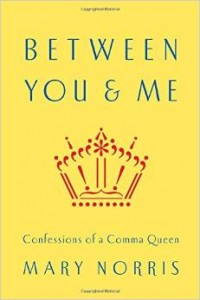 Between You & Me: Confessions of a Comma Queen by Mary Norris (W.W. Norton, April 16, 2015).
Between You & Me: Confessions of a Comma Queen by Mary Norris (W.W. Norton, April 16, 2015).
Mary Norris has spent more than three decades in The New Yorker’s copy department, maintaining its celebrated high standards. Now she brings her vast experience, good cheer, and finely sharpened pencils to help the rest of us in a boisterous language book as full of life as it is of practical advice. Between You & Me features Norris’s laugh-out-loud descriptions of some of the most common and vexing problems in spelling, punctuation, and usage―comma faults, danglers, “who” vs. “whom,” “that” vs. “which,” compound words, gender-neutral language―and her clear explanations of how to handle them. Down-to-earth and always open-minded, she draws on examples from Charles Dickens, Emily Dickinson, Henry James, and the Lord’s Prayer, as well as from The Honeymooners, The Simpsons, David Foster Wallace, and Gillian Flynn. She takes us to see a copy of Noah Webster’s groundbreaking Blue-Back Speller, on a quest to find out who put the hyphen in Moby-Dick, on a pilgrimage to the world’s only pencil-sharpener museum, and inside the hallowed halls of The New Yorker and her work with such celebrated writers as Pauline Kael, Philip Roth, and George Saunders. Readers―and writers―will find in Norris neither a scold nor a softie but a wise and witty new friend in love with language and alive to the glories of its use in America, even in the age of autocorrect and spell-check. As Norris writes, “The dictionary is a wonderful thing, but you can’t let it push you around.”
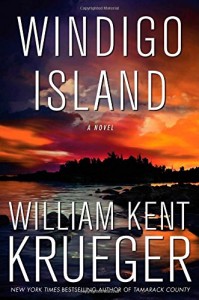 Windigo Island: A Novel by William Kent Krueger (Atria Books, May 19, 2015).
Windigo Island: A Novel by William Kent Krueger (Atria Books, May 19, 2015).
When the body of a teenage Ojibwe girl washes up on the shore of an island in Lake Superior, the residents of the nearby Bad Bluff reservation whisper that it was the work of a deadly mythical beast, the Windigo, or a vengeful spirit called Michi Peshu. Such stories have been told by the Ojibwe people for generations, but they don’t explain how the girl and her friend, Mariah Arceneaux, disappeared a year ago. At the request of the Arceneaux family, private investigator Cork O’Connor takes on the case. But on the Bad Bluff reservation, nobody’s talking. Still, Cork puts enough information together to find a possible trail. He learns that the old port city of Duluth is a modern-day center for sex trafficking of vulnerable women, many of whom are young Native Americans. As the investigation deepens, so does the danger. Yet Cork holds tight to his higher purpose—his vow to find Mariah, an innocent fifteen-year-old girl whose family is desperate to get her back. With only the barest hope of saving her from men whose darkness rivals that of the legendary Windigo, Cork prepares for an epic battle that will determine whether it will be fear, or love, that truly conquers all.
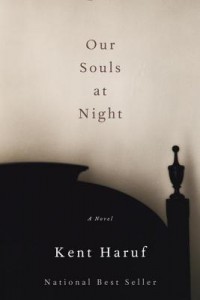 Our Souls at Night: A Novel by Kent Haruf (Knopf, May 26, 2015).
Our Souls at Night: A Novel by Kent Haruf (Knopf, May 26, 2015).
Addie Moore pays an unexpected visit to a neighbor, Louis Waters. Her husband died years ago, as did his wife, and in such a small town they naturally have known of each other for decades; in fact, Addie was quite fond of Louis’s wife. His daughter lives hours away in Colorado Springs, her son even farther away in Grand Junction, and Addie and Louis have long been living alone in houses now empty of family, the nights so terribly lonely, especially with no one to talk with. Their brave adventures—their pleasures and their difficulties—are hugely involving and truly resonant, making Our Souls at Night the perfect final installment to this beloved writer’s enduring contribution to American literature.
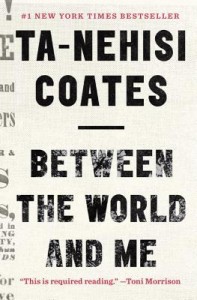 Between the World and Me by Ta-Nehisi Coates (Spiegel & Grau, July 14, 2015).
Between the World and Me by Ta-Nehisi Coates (Spiegel & Grau, July 14, 2015).
“This is your country, this is your world, this is your body, and you must find some way to live within the all of it.” In a profound work that pivots from the biggest questions about American history and ideals to the most intimate concerns of a father for his son, Ta-Nehisi Coates offers a powerful new framework for understanding our nation’s history and current crisis. Americans have built an empire on the idea of “race,” a falsehood that damages us all but falls most heavily on the bodies of black women and men—bodies exploited through slavery and segregation, and, today, threatened, locked up, and murdered out of all proportion. What is it like to inhabit a black body and find a way to live within it? And how can we all honestly reckon with this fraught history and free ourselves from its burden?
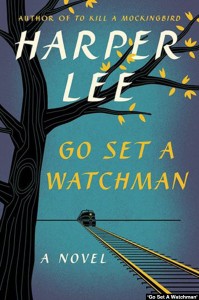 Go Set a Watchman: A Novel by Harper Lee (Harper, July 14, 2015).
Go Set a Watchman: A Novel by Harper Lee (Harper, July 14, 2015).
Maycomb, Alabama. Twenty-six-year-old Jean Louise Finch—”Scout”—returns home from New York City to visit her aging father, Atticus. Set against the backdrop of the civil rights tensions and political turmoil that were transforming the South, Jean Louise’s homecoming turns bittersweet when she learns disturbing truths about her close-knit family, the town, and the people dearest to her. Memories from her childhood flood back, and her values and assumptions are thrown into doubt. Featuring many of the iconic characters from To Kill a Mockingbird, Go Set a Watchman perfectly captures a young woman, and a world, in painful yet necessary transition out of the illusions of the past—a journey that can only be guided by one’s own conscience.
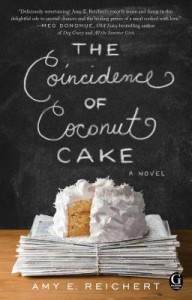 The Coincidence of Coconut Cake by Amy Reichert (July 21, 2015).
The Coincidence of Coconut Cake by Amy Reichert (July 21, 2015).
You’ve Got Mail meets How to Eat a Cupcake. In downtown Milwaukee, Wisconsin, Lou works tirelessly to build her beloved yet struggling French restaurant, Luella’s, into a success. She cheerfully balances her demanding business and even more demanding fiancé…until the morning she discovers him in the buff—with an intern. Witty yet gruff British transplant Al is keeping himself employed and entertained by writing scathing reviews of local restaurants in the Milwaukee newspaper under a pseudonym. When an anonymous tip sends him to Luella’s, little does he know he’s arrived on the worst day of the chef’s life. The review practically writes itself: underdone fish, scorched sauce, distracted service—he unleashes his worst. The day that Al’s mean-spirited review of Luella’s runs, the two cross paths in a pub: Lou drowning her sorrows, and Al celebrating his latest publication. As they chat, Al playfully challenges Lou to show him the best of Milwaukee and she’s game—but only if they never discuss work, which Al readily agrees to. As they explore the city’s local delicacies and their mutual attraction, Lou’s restaurant faces closure, while Al’s column gains popularity. It’s only a matter of time before the two fall in love…but when the truth comes out, can Lou overlook the past to chase her future? Set in the lovely, quirky heart of Wisconsin, The Coincidence of Coconut Cake is a charming love story of misunderstandings, mistaken identity, and the power of food to bring two people together.
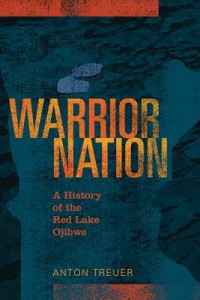 Warrior Nation: A History of the Red Lake Ojibwe by Anton Treur (September 1, 2015)
Warrior Nation: A History of the Red Lake Ojibwe by Anton Treur (September 1, 2015)
The Red Lake Nation has a unique and deeply important history. Unlike every other reservation in Minnesota, Red Lake holds its land in common—and, consequently, the tribe retains its entire reservation land base. The people of Red Lake developed the first modern indigenous democratic governance system in the United States, decades before any other tribe, but they also maintained their system of hereditary chiefs. The tribe never surrendered to state jurisdiction over crimes committed on its reservation. The reservation is also home to the highest number of Ojibwe-speaking people in the state. Warrior Nation covers four centuries of the Red Lake Nation’s forceful and assertive tenure on its land. Ojibwe historian and linguist Anton Treuer conducted oral histories with elders across the Red Lake reservation, learning the stories carried by the people. This fascinating history offers not only a chronicle of the Red Lake Nation but also a compelling perspective on a difficult piece of U.S. history.
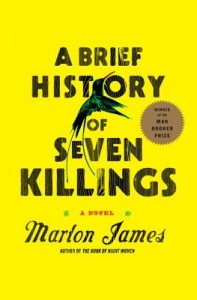 A Brief History of Seven Killings: A Novel by Marlon James (September 8, 2015).
A Brief History of Seven Killings: A Novel by Marlon James (September 8, 2015).
On December 3, 1976, just before the Jamaican general election and two days before Bob Marley was to play the Smile Jamaica Concert to ease political tensions in Kingston, seven unnamed gunmen stormed the singer’s house, machine guns blazing. The attack wounded Marley, his wife, and his manager, and injured several others. Little was officially released about the gunmen, but rumors abounded regarding the assassins’ fates. A Brief History of Seven Killings is James’s fictional exploration of that dangerous and unstable time in Jamaica’s history and beyond. Deftly spanning decades and continents and peopled with a wide range of characters—assassins, drug dealers, journalists, and even ghosts—James brings to life the people who walked the streets of 1970s Kingston, who dominated the crack houses of 1980s New York, and who reemerged into a radically altered Jamaica of the 1990s.
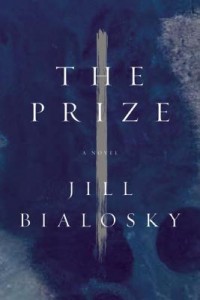 The Prize: A Novel by Jill Bialosky (Counterpoint, September 15, 2015).
The Prize: A Novel by Jill Bialosky (Counterpoint, September 15, 2015).
Edward Darby has everything a man could hope for: meaningful work, a loving wife, and a beloved daughter. With a rising career as a partner at an esteemed gallery, he strives not to let ambition, money, power, and his dark past corrode the sanctuary of his domestic and private life. Influenced by his father, a brilliant Romantics scholar, Edward has always been more of a purist than an opportunist. But when a celebrated artist controlled by her insecurities betrays him, and another very different artist awakens his heart and stirs up secrets from his past, Edward will find himself unmoored from his marriage, his work, and the memory of his beloved father. And when the finalist of an important prize are announced, and the desperate artists maneuver to seek its validation, Edward soon learns that betrayal comes in many forms, and that he may be hurtling toward an act that challenges his own notions about what comprises a life worth living. A compelling odyssey of a man unhinged by his ideals, The Prize is also an unflinching portrait of a marriage struggling against the corroding tide of time and the proximity to the treacherous fault line between art and money.
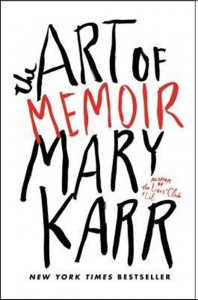 The Art of Memoir by Mary Karr (Harper, September 15, 2015).
The Art of Memoir by Mary Karr (Harper, September 15, 2015).
For thirty years Karr has also taught the form, winning teaching prizes at Syracuse. (The writing program there produced such acclaimed authors as Cheryl Strayed, Keith Gessen, and Koren Zailckas.) In The Art of Memoir, she synthesizes her expertise as professor and therapy patient, writer and spiritual seeker, recovered alcoholic and “black belt sinner,” providing a unique window into the mechanics and art of the form that is as irreverent, insightful, and entertaining as her own work in the genre. Anchored by excerpts from her favorite memoirs and anecdotes from fellow writers’ experience, The Art of Memoir lays bare Karr’s own process. As she breaks down the key elements of great literary memoir, she breaks open our concepts of memory and identity, and illuminates the cathartic power of reflecting on the past; anybody with an inner life or complicated history, whether writer or reader, will relate.
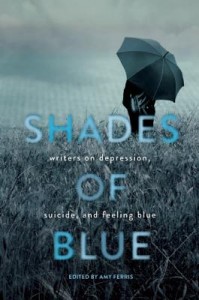 Shades of Blue: Writers on Depression, Suicide, and Feeling Blue by Amy Ferris (Editor) (Seal Press, September 29, 2015).
Shades of Blue: Writers on Depression, Suicide, and Feeling Blue by Amy Ferris (Editor) (Seal Press, September 29, 2015).
The silent epidemic of depression affects millions of people and takes dozens of lives every day, while our culture grapples with a stigma against open discussion of mental health issues. Editor Amy Ferris has collected these stories to illuminate the truth behind that stigma and offer compassion, solidarity, and hope for all those who have struggled with depression.
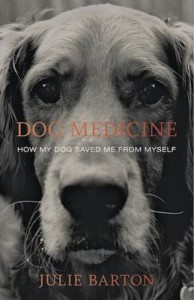 Dog Medicine: How My Dog Saved Me From Myself by Julie Barton (Think Piece Publishing, November 10, 2015).
Dog Medicine: How My Dog Saved Me From Myself by Julie Barton (Think Piece Publishing, November 10, 2015).
At twenty-two, Julie Barton collapsed on her kitchen floor in Manhattan. She was one year out of college and severely depressed. Summoned by Julie’s incoherent phone call, her mother raced from Ohio to New York and took her home. Psychiatrists, therapists and family tried to intervene, but nothing reached her until the day she decided to do one hopeful thing: adopt a Golden Retriever puppy she named Bunker. Dog Medicine captures in beautiful, elegiac language the anguish of depression, the slow path to recovery, and the astonishing way animals can heal even the most broken hearts and minds.

Thanks, Jill. I always look forward to your book recommendations. Cheers!
Thanks Robin! What books would you recommend? This is a great time of year to curl up with a book.
My mother used to tell me stories of the Windigo when I was a child and it was so frightening I never forgot it. I don’t think I can resist putting Windigo Island on my wish list. Thanks for sharing your book suggestions!